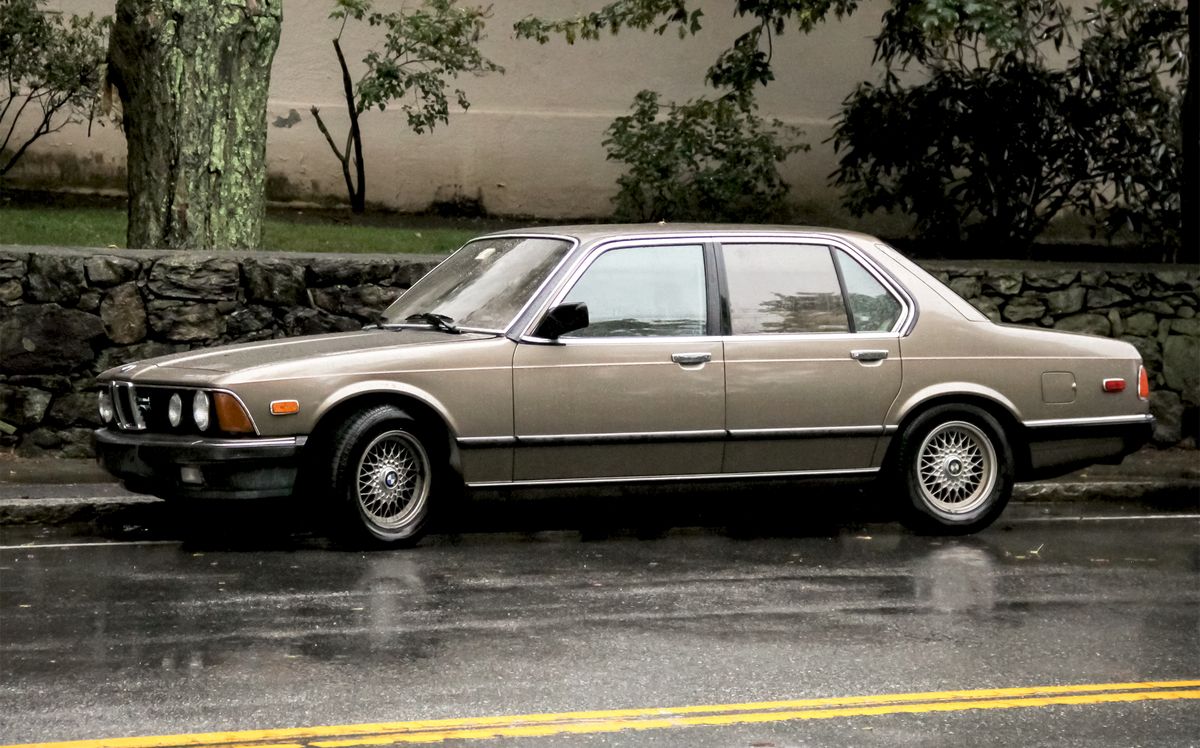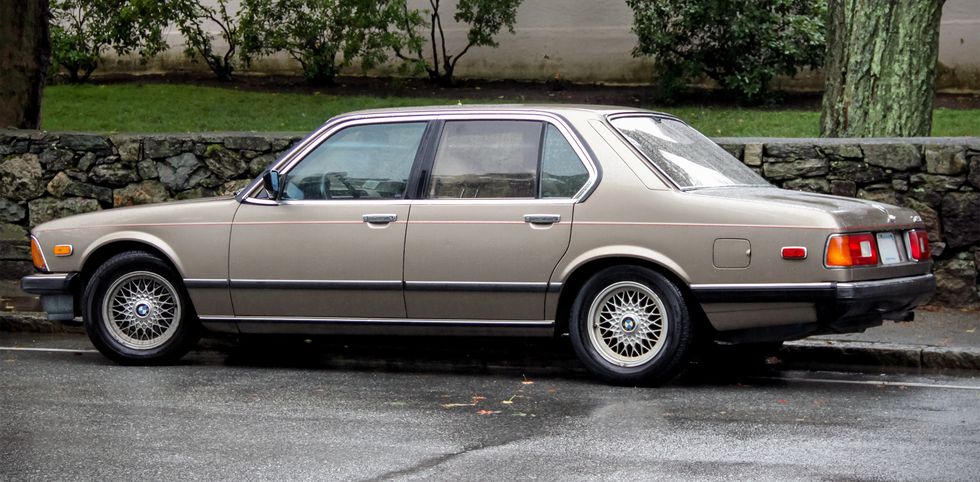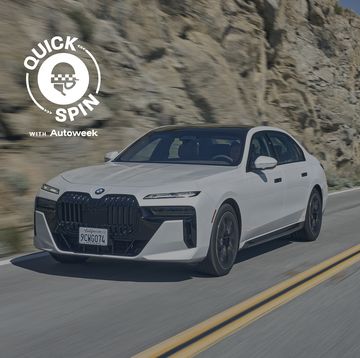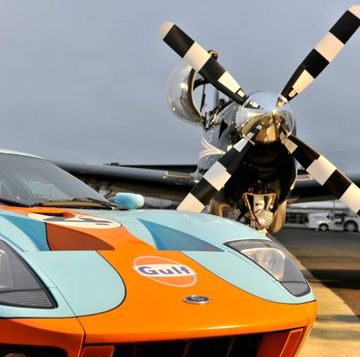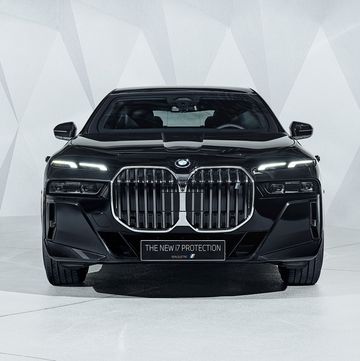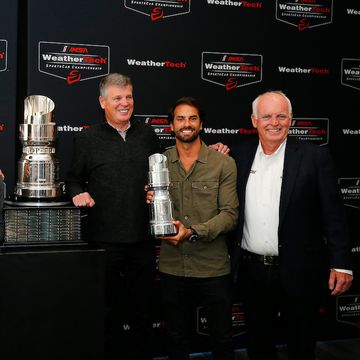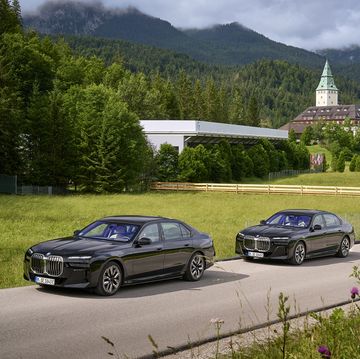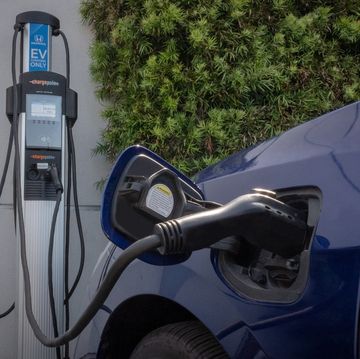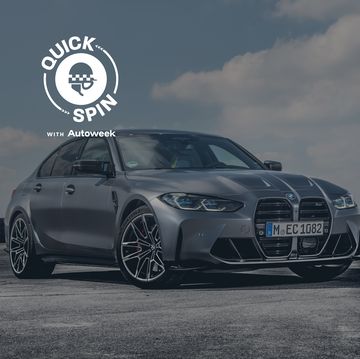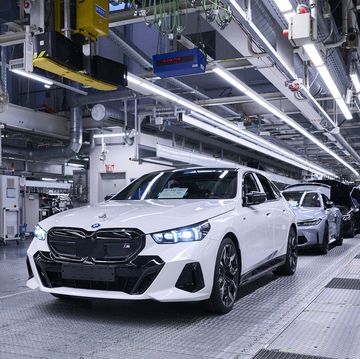When it comes to large European sedans, the US has usually received just the cream of the crop, while back home in Europe customers could save a few pfennigs by buying a taxi-grade S-Class. For instance, you didn't see Mercedes-Benz offer the S280 here in the 1990s, and Audi didn't offer the 2.8- or 3.0-liter engines in the first-gen A8.
Likewise, BMW kept the 728i out of the US when the E38 generation was going strong, and it didn't offer any inline six-cylinder versions of the subsequent E65-generation 7-Series stateside, as entertaining as that would have been as a used car bargain. (And by entertaining we mean just as pricey to service despite the smaller engine).
But back in the 1970s things were a little different with the first-generation 7-Series.
The first-gen model, which evolved from the Bavaria, was offered with the 3.2-liter M30 engine stateside and was badged as the 733i. You could also get the Seven with a 3.4-liter version of that engine, badged as the 735i.
An even more luxurious L7 version of that 7-Series was the range topper, but it had the same 3.4-liter engine, good for 182 hp and 214 lb-ft of torque.
And that was it—there was no V8 in the lineup at the time, and wouldn't be until the E32-generation 7-Series arrived, which not only had a V8 in the 740i, but also a V12 in the 750i, for those who felt like they needed one.
But back when private importation was actually possible, and practiced by dealers small and large, you could get a much more powerful E23-generation 7-Series, like this turbocharged 745i with 249 hp on tap. This gave the E23 quite a bit more oomph, even when paired with the sole transmission on the menu—a ZF three-speed automatic.
The first two model years of the 745i saw BMW use the 3.2-liter M102 engine teamed up with a turbo, and for 1983 through 1986 Munich went to a 3.4-liter M106 engine paired with a turbo.
But these beasts weren't really meant for tackling back roads with a manual transmission. Rather, they were for effortless cruising on the autobahn, or what passed for the autobahn in the US at the time.
The legacy of the E23 itself stateside remains overshadowed by the W126-generation Mercedes-Benz S-Class, which saw more than its share of gray imports arrive stateside.
In fact, the W126 S-Class played no small role in the gray import era coming to a close, as Mercedes-Benz and other manufacturers effectively lobbied the US government to end gray market imports, making an exception for cars 25 years and older that in practice has become narrower and narrower.
But these older gray market cars remain. Browse the classifieds in newspapers long enough (are there still newspapers in 2023?) and a non-trivial percentage of S-Class and SL-Class cars from that era will have some telltale signs of haphazard aftermarket conversion to DOT standards.
As for us, we're just glad to see any E23 7-Series on the road.

Jay Ramey grew up around very strange European cars, and instead of seeking out something reliable and comfortable for his own personal use he has been drawn to the more adventurous side of the dependability spectrum. Despite being followed around by French cars for the past decade, he has somehow been able to avoid Citroën ownership, judging them too commonplace, and is currently looking at cars from the former Czechoslovakia. Jay has been with Autoweek since 2013.
